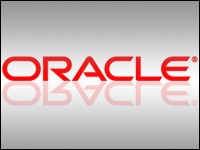
At a recent corporate event, Oracle provided much additional detail about integration and architecture plans for its Fusion project — the company’s strategy to deliver next-generation applications, middleware and architecture based on its recent acquisitions.
However, the CRM sector is still in the dark about the features and functionality that will be included in Fusion’s CRM offerings, and until Oracle’s acquisition of Siebel closes this month, there is not likely to be much enlightenment.
Best of All CRM Worlds?
Even then, it will be some time before the industry gets a sense of what Oracle will do with its PeopleSoft, JD Edwards, Retek and Siebel technologies.
“Oracle will not have been able to work on integrating Siebel until the acquisition has been finalized,” Shawn Willett, principal analyst for application infrastructure at Current Analysis, told CRM Buyer. “That puts it a year behind its work on JD Edwards, PeopleSoft and Retek,” he pointed out.
In some respects, it will not be a difficult process, Willett said, as Siebel’s underlying architecture is not that dissimilar from the other application platforms. In other areas, however, the systems don’t match well at all, because the vendors differed — greatly, in some respects — in their CRM approaches.
Which features will be kept and which will be discarded is still an open question. Oracle has made statements about merging the best of the various suites’ CRM features but has not provided many details.
Oracle also reiterated earlier promises to support its new acquisitions, at least for the time being. It plans to roll out Oracle E-Business Suite 12, PeopleSoft Enterprise 9 and JD Edwards EnterpriseOne 8.12 this year. Release of a new version of JD Edwards World is slated for 2007.
Halfway There
At the Oracle event, President Charles Phillips said the company was halfway through the process of developing Oracle Fusion Applications and remains on track for the 2008 target delivery date.
The company has also defined the Oracle Fusion Architecture and certified all Oracle applications — including a set of tools being used to develop the Oracle Fusion Applications — on Oracle Fusion Middleware, according to Phillips.
Additionallly, Oracle has defined the data model and mapped the functionality that is planned for future releases of Oracle Fusion Applications, he said.
Customers will find the same functionality they had in earlier applications, as well as new features, noted Phillips. Upgrading to the new applications should be easy, he added. “We … feel confident that 80 percent of our customers will be able to upgrade to Oracle Fusion Applications.”
The Road to Fusion
The Web Services Repository is another tool designed to help in the integration process, according to John Wookey, Oracle’s senior vice president of applications development.
Customers will be able to use it with Oracle Portal or any JSR168-compliant portal to build custom composite applications, according to the company.
Oracle BPEL Process Manager will be able to leverage the Web Services Repository to design and implement standards-based adaptable business processes. Additionally, the Web Services Repository helps expose the integration points of Oracle Fusion Applications.
“We’ve already developed the upgrade architecture and will begin working with a customer advisory board later this year to help us determine the best ways to automate and ease the upgrade process,” Wookey commented.
Plug and Play?
A key strategic component of Oracle’s Fusion platform is its open standards-based technology. Companies that deploy systems built on Fusion architecture will be able to add and integrate new functionality — even from other vendors — with ease, Oracle said.
The way Oracle presents it makes a great deal of sense, Willett remarked. “They have a rational plan to make their application server, their portal and development tools all come together. Also BI (business intelligence) and reporting are other key elements that will be in common with the new applications.”
There remains much work to be done. It’s also unsure to what degree Fusion will be dependent on the Oracle platform.
“Oracle says a company could, for example, take out its BI tool and replace it with a third-party app,” said Willett. “The question is, how practical will that be for users?”





















































